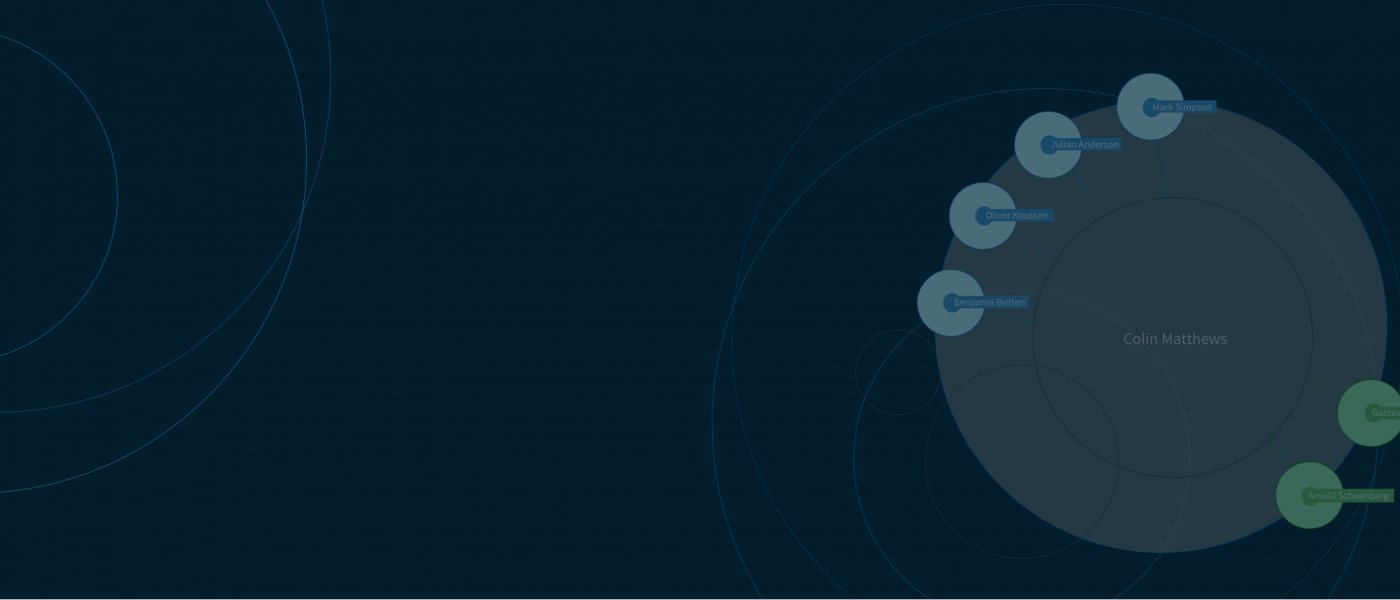Lockdown Sounds: Tom McKinney listens to the Big Lockdown Music Survey
15th June 2022
Articles NMC RecordingsWe gave guitarist and BBC Radio 3 broadcaster Tom McKinney early access to the tracks selected as part of our Big Lockdown Music Survey. After much listening, he shares some observations on the themes and ideas that emerge from the music.
During a recent week, I spent each evening working my way through the 71 tracks that have been chosen by the six regional curators for NMC’s Big Lockdown Project. And the question I constantly asked myself was this: had I been sent this music without any context, would I have known that it was written during the lockdowns? What were the sensations I felt myself, especially at the start of lockdown, and would I be able to hear those sensations replicated in other people’s music? And actually, does that even matter?
And that’s what makes this all such a worthwhile listening experience: you lurch from works that couldn’t have been written during any other period of history, to those that were conceived, at least to my ears, without any relevance to lockdown.
As you’d expect, each regional curator produced a set of works that appealed to their own personal tastes and quite likely even their own personal experiences of lockdown. But there are certainly some surprising similarities. To start, I’ve never known the importance of words, the recitation of text, to be so foregrounded in any call-for-works quite like this.
You lurch from works that couldn’t have been written during any other period of history, to those that were conceived, at least to my ears, without any relevance to lockdown
Perhaps music alone wasn’t enough for some to express the complexity of emotions during lockdown? With Dan Johnson’s Day 2 we get to eavesdrop on a genuine voicemail that tells us of vulnerability and relief. Compare that with Aurora Nishevci’s Clapped, a furious political rant: “Cover your face and shut your mouth”.
Many tracks from all the regions also use field recordings of birds. The birdsong can be the focus of the tracks, often beginning pure and then becoming distorted through editing processes; whereas in others, the birds sit underneath the music, replicating that background soundtrack which so many of us experienced in the nature-filled spring of 2020.
Many tracks from all the regions also use field recordings of birds
Another theme within all the regions was a general sense of creative safety. With the exception of only a few works, very little here feels experimental or risky. And was that to be expected? In that time of instability, were musicians relying on the comfort and security of what they knew best? And is that also the reason why the final list sounds so competent and confident?
But comfort and security certainly doesn’t mean uninteresting or stale, and some of these tracks sound like the musicians involved were having a hell of a lot of fun. Stephen Crowe’s Breff Mints is frantic, hyperspeed, cut+splice trumpet virtuosity. Oboist Melinda Maxwell’s Pan-Harmonium seems to relish in the luxury of having time to really play about with an instrument she already knows so well. And organist Piers Hudson’s Gigue is pure musical positivity.
Individual recording equipment and techniques are also worth a mention. The variability from one track to the next creates incredibly powerful juxtapositions, and it’s a really important part of the curation process. Moving from an acoustic work like Mandje by Alice Barron to the digital synth world of S.A.A.R.A’s Siren Song was a remarkable jump – the natural followed by the artificial, human fallibility usurped by the perfection of technology.
In that time of instability, were musicians relying on the comfort and security of what they knew best?
To finish, I’d just like to mention a few more tracks that made a real impact on me. In Bobby Barry’s I hope this finds you well I felt my passive engagement grow into frustration, anger and finally uncomfortable claustrophobia. The work explores lockdown email etiquette through every possible permutation of “I hope this email finds you well … hope you’re hanging in there”.
When I arrived at Curved Forms by Alex Groves, I was taken back to a lockdown experience of my own, when I rediscovered Pauline Oliveros’s album Deep Listening, which I suddenly found I had the time to listen to for the first time in a very long time! Alex’s own form of deep listening here is absolutely captivating and immersive, a soundworld that I could constantly be saturated in.
And finally, another personal lockdown memory was triggered by Mark David Boden’s Isolation, a passionate yet still introverted work for violin that was written for Fenella Humphreys. Fenella’s living room concerts, which included Mark’s solo, were part of a genre of musical performance that will forever be associated with lockdown – it was a reminder that no matter what happens, great musicians will always find a way to make themselves heard.
NMC's Discover platform is created in partnership with ISM Trust.
